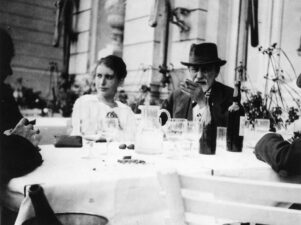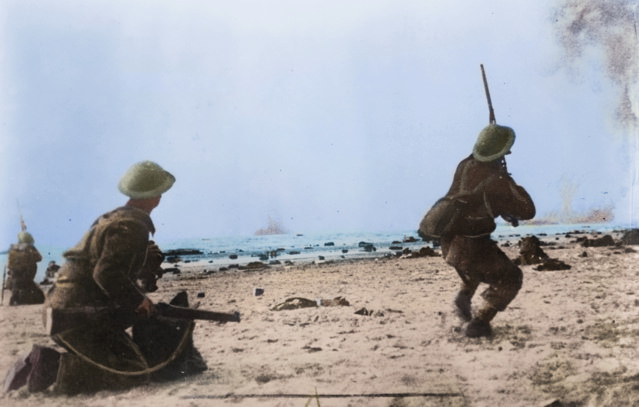A Dangerous Method: The Relationship Between Freud and Jung (and others)
Article By Alfredo Aguilar
 “People could learn from their mistakes, if they weren’t so busy denying them”. Carl Gustav Jung
“People could learn from their mistakes, if they weren’t so busy denying them”. Carl Gustav Jung
A Dangerous Method is a 2011 film that deals with the complicated personal relationships between Carl Jung, founder of analytical psychology, Sigmund Freud, founder of the psychoanalysis, and Sabine Spielrein, initially a patient of Jung and later herself a physician and one of the first female psychoanalysts.
It is a period drama, set in the years before the First World War, beginning in 1904 when Sabine Spielrein is admitted as Jung’s patient to the psychiatric hospital in Zurich while suffering a psychotic episode.
The film, directed by David Cronenberg, was filmed between May and July 2010 in Cologne, with locations in Vienna. It stars Michael Fassbender, playing Jung; Viggo Mortensen, in the role of Freud; and Kiera Knightley as Sabine Spielrein.
Anecdotally, Christopher Waltz was apparently the first choice to play Freud, but he couldn’t do it due to a scheduling conflict, since he was filming at the time, so Cronenberg turned to Viggo Mortensen for a third collaboration. They had previously made “A History of Violence” and “Eastern Promises” together. Mortensen plays the character as expected, with his efficient and professional style. I must confess that when I found out about this, I was very curious about how Waltz would have done it, but these are comments left to the wayside for film buffs. For the role of Jung, they had thought of Christian Bale, but he had the same problem, so the role went to Michael Fassbender, who played it so well that I simply cannot imagine Bale in the role.
All the performances are very convincing and this historical-psychological drama with such high-quality dialogues far exceeds most things that can be seen today. The film won several awards, most notably for Fassbender and Mortensen.
By introducing a rather seedy character called Otto Gross, the characters’ attitudes to sex are brought to the fore, while also highlighting some ethical issues of psychoanalysis, which partly contributed to the breakdown of the relationship between Freud and Jung. However, there were other differences of opinion between them, which became increasingly divisive over time, such as Jung and Freud’s divergent attitudes towards mysticism (an important part of Jung’s outlook, but totally neglected by Freud) and Freud’s desire (according to Jung) to be seen as an infallible father figure.
The figure of Sabine Spielrein is a volcanic spark between the two men, who enlivens the film with her dialogues with both of them, as well as with Jung’s long-suffering wife, Emma.
There is an amusing incident at the beginning of the film when Jung and Freud first meet at Freud’s house for lunch. Once they are seated at the table, Jung becomes so engrossed in the topic they are talking about that he does not stop helping himself to food until Freud says something like “help yourself freely” and only then does he realize that the whole family is watching him with great attention and curiosity. The conversation continues in a social club for coffee and dessert, where they carry on discussing psychoanalysis. They then return to Freud’s house and study, where they continue talking about all these topics until Freud asks him if he has realized that they have been talking for 13 hours straight.
All in all, this is a great film for learning more about Freud and Jung, the differences between them, and the mystical aspects of Jung’s life and work. Add to this that it is brilliantly acted and directed, and it becomes the perfect recipe for enjoyment and learning combined.
Some final information about the main characters:
– Otto Gross, due to his bad life, lost everything and it is said that he was left to starve to death in 1919. He was found dead on the street.
– Sigmund Freud fled Vienna already very ill with his family after the arrival of the Nazis and died in London in 1939.
– Sabine Spielrein returned to Russia and not only practiced but trained many prominent psychoanalysts. She returned to her hometown of Rostov on the Don. In 1941, already widowed, she was taken to a synagogue, with many other Jews, and shot by the Nazis along with her daughters and everybody else.
– Carl Gustav Jung suffered a deep depression during World War I, from which he eventually recovered to become the world’s most eminent psychologist. He survived his wife Emma and his lover Toni Wolff and died peacefully in 1961.
Image Credits: By Wikimedia Commons | CC BY PD
The entity posting this article assumes the responsibility that images used in this article have the requisite permissionsImage References
By Wikimedia Commons | CC BY PD
Permissions required for the publishing of this article have been obtained



What do you think?